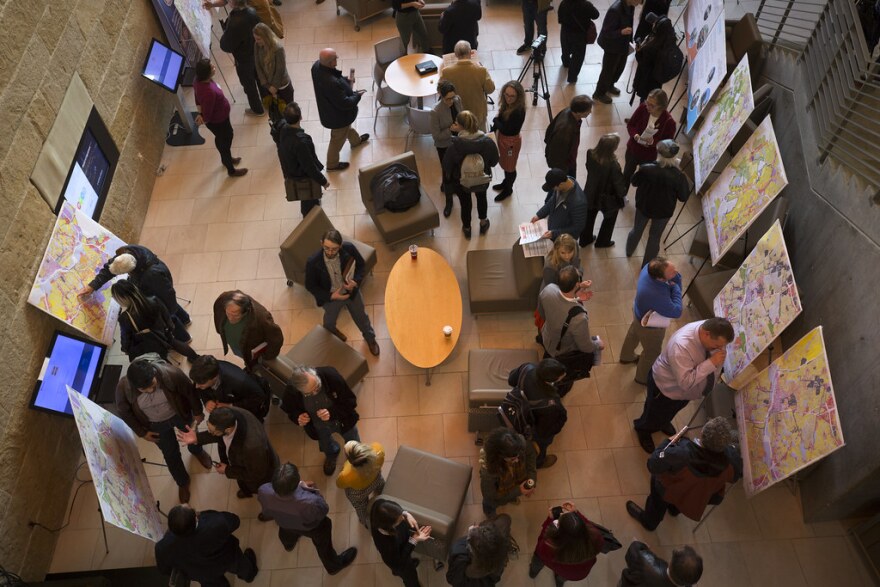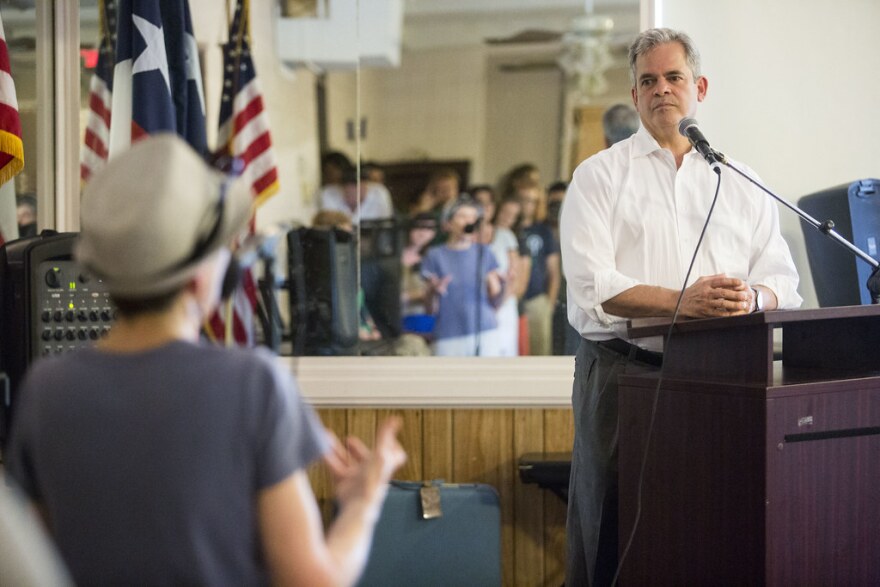The City of Austin is unveiling a new version of its land development code Friday, the latest in an eight-year and more than $10 million process.
A land code determines what can be built and where it can go. Austin hasn’t rewritten its entire code since 1984.
But this process, which began in 2012, has taken longer than elected officials expected. Austin has had two mayoral elections since this began. The city has a whole new system of local governance. The median cost of renting has risen by nearly 35%.
How did we get here?
Building A 'Compact And Connected' City
In the early hours of June 15, 2012, City Council members, including former Mayor Lee Leffingwell, approved Imagine Austin, a plan that lays out goals for how the city will grow over the next couple decades.
Essential to accomplishing these goals – the primary being to build a “compact and connected” city – was to write a new land code. By establishing new rules for development, elected officials argued, the city could grow in a way that would provide housing and transportation for a burgeoning population.
“There will be ongoing efforts to make sure that the plan gets fully implemented and that all the necessary adjustments to the land development code and other code provisions are made to make sure that we achieve everything that is set out there,” then-Council Member Chris Riley said.

Part of creating a “compact and connected” city means preventing Austin from sprawling outward by building only single-family homes and instead filling the city in with denser housing – duplexes, fourplexes and small apartment buildings, for example. Austin’s current code makes it difficult to build anything but large apartment buildings and single homes.
When that council passed Imagine Austin back in 2012, Riley said he was certain a new code would pass quickly, too.
“I’m so confident based on everything I’ve seen in this process in the ability of our community to work together to achieve collective goals,” he said.
Calls For Unity
The next year, the city hired Opticos, a firm based in Berkeley, Cali., to begin writing the code. The city also put together a task force and held public meetings.
Four years later, in January 2017, the city released a first draft of CodeNEXT.

“This is the document that describes how we look as a city, how we function as a city, how we build as a city,” Mayor Steve Adler said from the podium in the city’s press conference room of the roughly 1,100 pages of the new land code.
Adler called for the city to come together, provide feedback and support the efforts to rewrite the rules governing development.
“There are no sides now in this discussion,” he said. “We are one community with a document and a code that we have to get right. The future of this city depends on the work that collectively we will do over the next year on this document.”
A Growing Divide
But at public meetings hosted and attended by city staff, it was clear a divide had grown over development – between those who wanted to preserve neighborhoods and those asking for a code that enabled change.
“We need to keep the existing code, which is workable, until the city makes an honest effort to develop a new code that is in the interest of our current residents and citizens,” Bill Spiesman said at a meeting in October 2017. “Put the brakes on CodeNEXT.”
At a meeting in Allandale that same month, some attendees interrupted with calls of “no” when the mayor described building more diverse types of housing, such as duplexes, throughout the city.
Others urged elected officials at these meetings to ensure the code meant a chance to build more housing in Austin.
“I’m looking forward to seeing increased housing density and increased types of housing that we can have,” Bouldin Creek resident Erin McGann said at a meeting of the neighborhood association in August 2017.

Members of one group opposing CodeNEXT tried to put the code rewrite, and any future code rewrites, to a public vote. In March 2018, citizens turned in a petition to the city, saying they feared the new code would lead to mass displacement and gentrification.
“At the end of the day – whether or not the final product people like it or don’t like it or somewhere in between – we believe they should have a right to decide whether this is the new land development code for the City of Austin or whether we continue under our old code,” said Fred Lewis, an attorney and treasurer of the political action committee Let Us Vote Austin.
'Something Has Gone Terribly Wrong'
Mayor Adler waved a white flag in August 2018 when he wrote on the City Council message board calling for an end to CodeNEXT and a restart of the code rewrite process.
Adler said CodeNEXT had been plagued by “misinformation” on all sides.
“When a long-time resident says with a straight face that CodeNEXT means every property in their neighborhood will be able to sell alcohol commercially, or a neighborhood listserv warns that most every home in their neighborhood will be demolished and each lot subdivided into 25-foot widths," he wrote, "then something has gone horribly wrong.”

A week later the council voted: a unanimous decision to “reboot” the code rewrite, with the city manager coming back with a new plan for the process by early 2019.
While this vote hit pause on the land code rewrite, some people interpreted the results of the November election as the public urging elected officials to continue with a new code. Residents rejected the effort to put current and future code rewrites to a public vote.
They also re-elected Adler over former Mayor Pro Tem Laura Morrison, who had been critical of CodeNEXT, and voted Natasha Harper-Madison, who had been supportive of a new code enabling more types of housing, to City Council.
A New Quest For Consensus
Last month, activists and City Council members representing Austin's lowest-income districts gathered at City Hall to announce their demands for a new code – among them, enabling more types of housing and incentivizing the building of income-restricted housing in new developments.
"I want more affordable housing and I want to fight gentrification like everybody behind me, and I think most people in Austin do."
They preached finding consensus on an oft-contentious issue.
“On one hand, I’m not a NIMBY [not in my backyard],” said Chas Moore, president of the Austin Justice Coalition, referring to the characterization often used for people who oppose new development in their neighborhoods.
“On the other hand, I’m also not an urbanist," he said. "And I want more affordable housing and I want to fight gentrification like everybody behind me, and I think most people in Austin do.”
Austin City Manager Spencer Cronk laid out his plan in a May memo for a revamped code rewrite process, involving multiple departments in the effort rather than just the city’s Planning and Zoning Departments. That original timeline was delayed still – with a first vote on the new code as early as December.
"The [code] rewrite process needs to move forward only as quickly as allows the process to be done well," Adler said.







